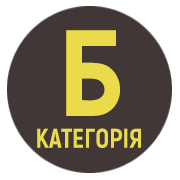FIGURES OF SOUND IN UKRAINIAN TRANSLATIONS OF R. M. RILKE’S POETRY: A LINGUOSEMIOTIC APPROACH
DOI:
https://doi.org/10.32782/folium/2024.4.4Keywords:
figures of sound, iconicity, Mykola Bazhan, poetic text, Rainer Maria Rilke, translation, Vasyl StusAbstract
The paper looks into the way figures of sound in R. M. Rilke’s poetry are conveyed in Ukrainian translations of R. M. Rilke's poetic text "Spanish Dancer" by Vasyl Stus and Mykola Bazhan. A linguosemiotic approach to the analysis of translation is applied, according to which phonographic figures are considered as iconic symbols, i. e. linguistic units that combine the properties of symbolic and iconic signs. The center of attention is symbolic-iconic semiosis, i. e. the process of creating meaning with iconic symbols, which involves the simultaneous symbolic (i. e. verbal) nomination of an object of reality and its iconic rendering. In this study, the object of reality is the visual effects and sounds associated with the Spanish flamenco dancer's performance, which the poetic text evokes in the reader: visual and auditory varieties of image iconicity take place. The text implies the presence of symbolic nominations and iconic presentations of the object, the quantitative ratio of which determines its degree of iconicity. The original text has 16 symbolic nominations and 19 iconic presentations of dance rendering and sounds, so it exhibits a high degree of iconicity. In the text of Stus's translation, there are 18 symbolic nominations, and only 7 iconic presentations. Instead, Bazhan's translation has a ratio of 21 to 20. It is concluded that in regard to conveying the figures of sound, Bazhan's translation is closer to the original than Stus's translation, although both translators were able to equally masterfully convey the imagery of Rilke's text.
References
Безугла Л. Р. Відтворення звукопису в українських перекладах поезії Р. М. Рільке (М. Лукаш, М. Бажан, В. Стус). Науковий Вісник Херсонського держ. ун-ту. Сер. : Германістика та міжкультурна комунікація. 2019. Вип. 1. С. 136–143.
Безугла Л. Р. Концептуальні типи іконічності поетичного тексту. Лінгвістичні студії / linguistic studies : міжнар. зб. наук. праць. Вип. 40. Том 2. Вінниця : ДонНУ імені Василя Стуса, 2020. С. 15–24.
Волошук В. І. Домінантні тропи в ліриці Р. М. Рільке та їх збереження в українських перекладах. Нова філологія. 2019. Вип. 76. С. 33–39.
Герман М. В. Поезії Р. М. Рільке в англомовній інтерпретації: перекладацький портрет Галлея Кіннела. Мова і культура. 2009. Вип. 11. Т. 6. Київ : Київський нац. ун-т ім. Т. Шевченка. С. 236–240.
Етимологічний словник української мови : в 7 т. / Ред. кол.: О. С. Мельничук (гол. ред.), В. Т. Коломієць, О. Б. Ткаченко / Ін-т мовознавства ім. О. О. Потебні. Київ : Наукова думка, 1985–2012.
Загоруйко Н. В. Стус та Р. М. Рільке – естетичні пошуки мистецького діалогу (за епістолярною спадщиною В. Стуса). Наукові записки Нац. ун-ту «Острозька академія». Сер. : Філологічна. 2013. Вип. 32. С. 68–80.
Іванишин П. Національний сенс культурного діалогу: рецензія на книгу «Райнер Марія Рільке й Україна: Наукові студії та переклади з Р. М. Рільке». Слово і час. 2006. № 1. С. 85–89.
Кравченко Л. Художньо-естетична сутність перекладів М. Ореста з Р. М. Рільке. Рідний край. 2005. № 1 (12). С. 107–117.
Ляшко Я. М. Поетичний переклад як особливий вид творчої діяльності (на матеріалі перекладів Р. М. Рільке). Наукові записки Ніжинського держ. ун-ту ім. Миколи Гоголя. Сер. : Філологічні науки. 2014. Кн. 4. С. 133–136.
Остапченко В. О. Лінгвокогнітивні та прагмастилістичні властивості лірико-поетичного дискурсу Р. М. Рільке : дис. … канд. філол. наук ; 10.02.04 / Харківський нац. ун-т імені В. Н. Каразіна. Харків, 2019. 342 с.
Рільке Р. М. Вибрані вірші в перекладах з німецької Миколи Бажана та інших поетів. Київ : А-БА-БА-ГА-ЛА-МА-ГА, 2023. 288 с.
Словник української мови : [в 11 т.] / Ін-т мовознав. ім. О. О. Потебні ; редкол. : І. К. Білодід (голова) [та ін.]. Київ : Наукова думка, 1970–1980.
Стус В. Твори. Т. 5. Львів : Просвіта, 1998. 392 с.
Benn G. Probleme der Lyrik. Ders. Gesammelte Werke: In 4 Bänden. Wiesbaden: Limes, 1962. Bd. 1: Essays, Reden, Vorträge. S. 494–532.
Bezugla L. „Goldschmiedin des menschlichen Wortes“: Kreative Ikonizität in der Lyrik von Lina Kostenko. Ukrainisch – Zur Emanzipation einer Sprache. Berlin: Frank&Timme, 2024. S. 271–301.
Duden. Bd. 7: Das Herkunftswörterbuch / 2. neu bearbeitete u. erweiterte Auflage von Günther Drosdowski. Mannheim u. a. : Dudenverlag, 1989. 844 S.
Fischer A. What, if anything, is phonological iconicity? Form Miming Meaning: Iconicity in Language and Literature. Amsterdam; Philadelphia: Benjamins, 1999. P. 123–134.
Fischer O. C. M., Nänny M. Introduction. Form miming meaning: Iconicity in language and literature. Amsterdam: Benjamins, 1999. Р. xv-xxxvi.
Görner R. Rainer Maria Rilke: im Herzwerk der Sprache. Wien : Paul Zsolnay, 2004. 342 S.
Gundolf F. R. M. Rilke. Wien : Johannes-Presse, 1937. 40 S.
Hamburger K. RILKE: Eine Einführung. Stuttgart: Klett. 1976. 198 S.











